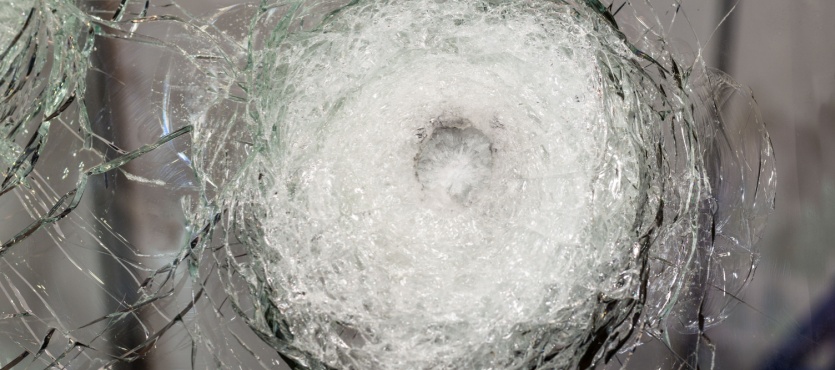Security concerns have never been more pressing, especially for businesses, government buildings, and even residential properties looking to enhance their protection against forced entry and active threats. While traditional glass windows and doors provide little resistance against break-ins or ballistic threats, ballistic glass is engineered to withstand extreme force, creating a barrier that significantly improves security.
Designed to resist bullets, blunt force, and other forms of impact, ballistic glass is a powerful security measure that can help deter intrusions and mitigate risks in high-threat environments. Understanding how this advanced glass technology works and why it’s a valuable investment can help businesses and property owners make informed decisions about their safety.
What Makes Ballistic Glass Different?
Unlike standard glass, which shatters upon impact, ballistic glass is constructed using multiple layers of glass and polycarbonate or other impact-resistant materials. These layers are fused together to create a durable, shatter-resistant structure that absorbs and disperses the force of an impact rather than breaking apart.
Ballistic glass is graded according to the UL 752 rating system, which determines the level of protection it provides. Lower levels can stop handgun rounds, while higher levels can resist high-powered rifles. This versatility makes ballistic glass suitable for a wide range of applications, from storefronts and offices to embassies and law enforcement facilities.
Protection Against Forced Entry
One of the most significant advantages of ballistic glass is its ability to prevent forced entry. Traditional glass can be shattered in seconds with a hammer, crowbar, or other blunt objects, making it easy for intruders to gain access to a building. Ballistic glass, on the other hand, is designed to withstand multiple strikes, making it nearly impossible to breach quickly.
Even if an intruder attempts to break through ballistic glass, they will face severe resistance, as the layers of glass and polycarbonate absorb the impact. This delays entry, buying valuable time for security personnel or law enforcement to respond to the threat. In many cases, the mere presence of ballistic glass serves as a deterrent, as criminals recognize the difficulty of breaking through and may abandon their attempt altogether.
Defense Against Active Threats
Ballistic glass is also an essential security feature for properties at risk of active threats, such as armed attacks or workplace violence. In high-risk environments, including banks, government buildings, schools, and retail stores, ballistic glass acts as a life-saving barrier that can prevent or minimize harm during an attack.
When bullets strike ballistic glass, the layers of material absorb and disperse the energy, preventing penetration and reducing the likelihood of injury to those inside. The glass may crack upon impact, but it remains intact, stopping bullets from traveling through and limiting the attacker’s ability to cause harm.
For businesses and institutions that prioritize safety, installing ballistic glass at entry points, reception areas, and high-security locations can provide an added layer of defense, protecting employees, customers, and assets in emergency situations.
Applications of Ballistic Glass
Ballistic glass is used across various industries and settings where security is a top concern. Some of the most common applications include:
- Financial Institutions: Banks and check-cashing establishments use ballistic glass to protect tellers and employees from robbery attempts and violent incidents.
- Government Facilities: Courthouses, embassies, and military buildings incorporate ballistic glass in windows, doors, and reception areas to safeguard personnel against threats.
- Retail and Commercial Properties: Jewelry stores, luxury boutiques, and high-end electronics retailers use ballistic glass to prevent smash-and-grab thefts.
- Schools and Educational Facilities: Many schools are installing ballistic glass as part of security upgrades to help protect students and staff in the event of an active shooter situation.
- Residential Homes: Homeowners in high-crime areas or those who prioritize security use ballistic glass in entry doors, windows, and safe rooms to deter break-ins.
A Long-Term Security Investment
While the initial cost of ballistic glass is higher than traditional security measures, its long-term benefits far outweigh the investment. Unlike temporary security measures like bars or reinforced screens, ballistic glass offers unobstructed visibility and aesthetic appeal while still providing superior protection.
Additionally, many insurance providers offer lower premiums for properties equipped with ballistic glass, recognizing the reduced risk of break-ins and damage. Combined with the peace of mind that comes from enhanced security, ballistic glass is a smart, long-term investment for businesses, government institutions, and homeowners alike.
Strengthen Your Security with Ballistic Glass
In today’s world, prioritizing security is more important than ever. Ballistic glass is a proven solution for protecting against forced entry and active threats, offering resistance against bullets, blunt-force attacks, and break-ins. Whether you’re securing a commercial property, government facility, or residential home, installing ballistic glass provides an unmatched level of protection while maintaining functionality and aesthetics.
For expert guidance on incorporating ballistic glass into your security plan, contact Panorama Windows & Doors. Our team is here to help you find the best solutions to keep your property safe and secure.

